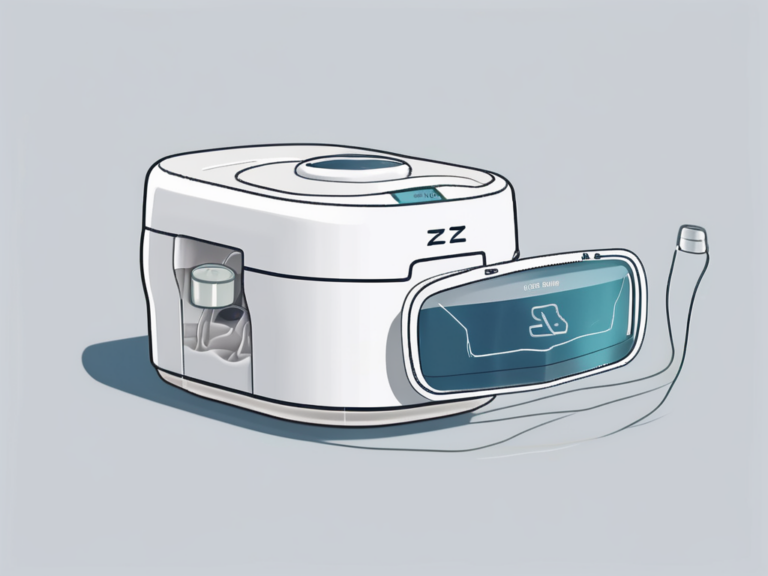Tips to Sleep Warm When Camping
Camping can be a wonderful experience, providing an opportunity to reconnect with nature and rejuvenate the soul. However, one aspect that can be challenging when spending a night outdoors is staying warm. In this article, we will explore some valuable tips to help you sleep warm and comfortable while camping.
Understanding the Importance of Staying Warm
Before we dive into specific techniques, it is crucial to understand why staying warm is essential when camping. Cold exposure can have adverse effects on our health, leading to conditions such as hypothermia and frostbite. These risks can be minimized by taking preventive measures to stay warm and insulated. Moreover, proper insulation offers numerous benefits, including improved sleep quality and overall comfort during the camping experience.
Health Risks of Cold Exposure
Exposing ourselves to cold temperatures without adequate protection can have serious consequences for our health. Hypothermia, a condition where the body loses heat faster than it can produce, can occur when body temperature drops below normal levels. Symptoms of hypothermia include shivering, confusion, and fatigue. Additionally, frostbite can result from excessive cold exposure, causing damage to skin and underlying tissues.
It is important to note that while hypothermia and frostbite are more commonly associated with extreme cold conditions, they can also occur in milder temperatures, especially when combined with factors such as wet clothing or prolonged exposure. Therefore, it is crucial to prioritize staying warm and properly insulated during camping trips, regardless of the expected weather conditions.
Benefits of Proper Insulation
Proper insulation plays a vital role in keeping you warm when camping. It helps retain your body heat and prevents cold air from seeping in. By creating a barrier between you and the cold ground or air, insulation helps maintain a comfortable environment for sleeping and resting. This, in turn, leads to improved overall sleep quality and a more enjoyable camping experience.
Furthermore, proper insulation not only keeps you warm but also helps conserve energy. When your body doesn’t have to work as hard to maintain its temperature, you will feel more energized and able to fully enjoy your camping activities. Additionally, by reducing the risk of hypothermia and frostbite, proper insulation allows you to focus on the beauty of nature and the adventures that await, rather than worrying about your well-being.
Choosing the Right Camping Gear
When it comes to staying warm during camping, choosing the right gear is paramount. Two essential items that deserve extra attention are your sleeping bag and tent. Let’s explore how to make informed decisions regarding these crucial pieces of camping equipment.
Selecting the Perfect Sleeping Bag
A quality sleeping bag can make all the difference in ensuring a warm and cozy sleep. Look for sleeping bags specifically designed for cold weather camping, with appropriate temperature ratings suitable for your intended camping conditions. Opt for bags with reliable insulation materials such as goose down or synthetic fibers that offer excellent heat retention even in damp conditions.
But what about the shape of the sleeping bag? Well, that’s another factor to consider. There are different shapes available, such as mummy-shaped bags that snugly wrap around your body, minimizing the amount of air space to heat up. On the other hand, rectangular-shaped bags offer more room to move around and can be unzipped to use as a blanket on warmer nights. Choose the shape that suits your preferences and camping style.
Importance of Quality Tent Material
Your tent acts as your shelter, protecting you from the elements. To maximize warmth, opt for a tent made from high-quality materials that provide proper insulation. Look for features such as double-layered fabric, sturdy zippers, and a waterproof rainfly that helps retain heat and keeps you dry. A well-designed tent will create an isolated environment, shielding you from the cold and wind.
But did you know that the color of your tent can also affect its warmth? Dark-colored tents absorb more sunlight, which can help warm up the interior during the day. On the other hand, lighter-colored tents reflect sunlight, keeping the interior cooler on hot summer days. Consider the climate and season you’ll be camping in when choosing the color of your tent.
Additionally, consider the tent’s ventilation system. While insulation is crucial for warmth, proper airflow is equally important to prevent condensation buildup inside the tent. Look for tents with mesh panels or vents that allow for adequate airflow without compromising on insulation. This will ensure a comfortable and dry camping experience.
Dressing for Warmth
The way you dress when camping significantly impacts your body’s ability to retain warmth. Layering your clothes plays a crucial role in maintaining optimal heat retention while allowing flexibility to adjust to changing temperatures. Let’s delve into the intricacies of dressing for warmth outdoors.
Layering Clothes for Optimal Heat Retention
Layering clothes involves wearing multiple layers of clothing that provide insulation and help trap heat. Start with a base layer made of moisture-wicking material, such as synthetic fabrics or merino wool, to keep you dry by wicking away sweat. The middle layer should consist of insulating materials like fleece or down, providing warmth. Finally, the outer layer acts as a protective shell against wind and moisture, with materials like Gore-Tex or nylon. By layering effectively, you can add or remove clothing as needed to regulate your body temperature.
The Role of Material in Thermal Comfort
Choosing the right materials for your outdoor clothing is paramount. Fabrics like merino wool, fleece, and synthetic blends are excellent choices due to their insulating properties and moisture-wicking capabilities. Avoid cotton, as it tends to retain moisture, which can make you feel colder. Instead, prioritize breathable and quick-drying materials that help regulate your body’s temperature during physical activities.
Now, let’s take a closer look at the base layer of clothing. Synthetic fabrics, such as polyester or nylon, are popular choices for base layers due to their ability to wick away moisture from the skin. These materials have a unique structure that allows them to pull sweat away from the body and distribute it across a larger surface area, where it can evaporate more quickly. Merino wool, on the other hand, is a natural fiber that is highly effective at regulating body temperature. It has the remarkable ability to absorb moisture without feeling wet, keeping you dry and comfortable even in humid conditions.
When it comes to the middle layer, fleece is a go-to option for many outdoor enthusiasts. This soft and lightweight fabric provides excellent insulation by trapping air between its fibers, creating a warm and cozy barrier against the cold. Down, which is often found in jackets and vests, is another popular choice. It is incredibly lightweight and provides exceptional warmth by trapping air in its fluffy clusters. The outer layer, also known as the shell layer, is designed to protect you from wind, rain, and snow. Gore-Tex, a waterproof and breathable fabric, is widely regarded as one of the best options for outdoor activities. It keeps you dry by preventing water from penetrating the fabric while allowing moisture vapor to escape, keeping you comfortable and protected from the elements.
Setting Up Your Campsite
The location and setup of your campsite can contribute significantly to staying warm throughout the night. Making thoughtful decisions in these aspects can create a cosier environment and shield you from cold winds.
Choosing the Ideal Location
When selecting a campsite, aim for areas that offer natural windbreaks, such as trees or large rocks. These features can provide valuable protection against chilly winds, creating a more comfortable sleeping environment. Additionally, consider the direction of the sun and choose a spot that receives ample sunlight during the day, as this can help warm up your campsite.
Furthermore, it is essential to take into account the proximity to water sources. While being close to a river or lake may seem idyllic, it can also bring about colder temperatures due to the moisture in the air. Therefore, it is advisable to strike a balance between convenience and temperature when choosing the perfect location for your campsite.
Using Natural Windbreaks
If natural windbreaks are not available at your chosen campsite, you can create your own using tarps, tents, or even strategically positioned backpacks. This simple technique can significantly reduce direct exposure to cold winds, creating a sheltered area where you can sleep undisturbed by any chilly gusts. Don’t underestimate the power of a well-placed windbreak!
Additionally, consider the layout of your campsite. Position your tent in a way that takes advantage of the natural topography, such as a gentle slope or a depression in the ground. These features can act as natural barriers against cold air, keeping your sleeping area warmer and more comfortable throughout the night.
Utilizing Heat Sources
When camping in colder conditions, utilizing heat sources can provide an additional layer of warmth and comfort. However, it is crucial to exercise caution and follow safety guidelines to prevent accidents or mishaps.
Safe Use of Portable Heaters
If you have access to a portable heater, it can be a valuable tool for creating a warm sleeping environment. However, it is crucial to ensure the heater is specifically designed for outdoor use and follow all safety instructions provided by the manufacturer. Never leave the heater unattended, maintain proper ventilation inside the tent, and keep flammable materials away from the heat source.
One important aspect to consider when using a portable heater is the fuel source. Different heaters use different types of fuel, such as propane or butane. It is essential to familiarize yourself with the specific fuel requirements of your heater and ensure you have an adequate supply for the duration of your camping trip. Additionally, always store the fuel in a safe and secure location, away from any open flames or heat sources.
Maximizing Heat from Campfires
A campfire can serve as a natural heat source, providing warmth and a cozy ambiance. To maximize heat output, focus on building a well-structured fire using dry wood that burns efficiently. Position yourself in a way that allows you to benefit from the radiant heat while keeping a safe distance to prevent accidental burns. Always remember to extinguish the fire completely before going to sleep or leaving the campsite.
When gathering firewood, it is important to be mindful of the environment and follow any regulations or guidelines set by the camping area. Look for fallen branches or deadwood that can be used as fuel, rather than cutting live trees or damaging the surrounding vegetation. By practicing responsible firewood collection, you can ensure the sustainability of the camping area and preserve the natural beauty for future campers to enjoy.
Food and Hydration for Heat
Proper nutrition and hydration play a crucial role in maintaining your body’s warmth and overall well-being during camping adventures. But let’s dive deeper into the topic and explore some interesting details about food and hydration in cold weather.
Nutritional Choices for Warmth
Choosing energy-rich, warm meals and snacks can help fuel your body and generate internal heat. When camping in chilly conditions, your body needs extra calories to keep warm. So, opt for meals that are high in protein, healthy fats, and complex carbohydrates. These nutrients provide a slow and steady release of energy, keeping you warm and satisfied for longer periods of time.
Consider adding foods like nuts, seeds, and whole grains to your camping menu. These foods are not only packed with essential nutrients but also contain natural oils that can help keep your body warm. Additionally, incorporating spices like cinnamon, ginger, and cayenne pepper into your meals can provide a warming effect and add a delightful taste to your camping cuisine.
Warm beverages like hot tea, coffee, or soup can also provide a helpful boost of warmth, while providing nourishment for your body. Sipping on a steaming cup of herbal tea or a comforting bowl of soup can not only warm you up from the inside but also provide a moment of relaxation and comfort amidst the cold wilderness.
Staying Hydrated to Maintain Body Temperature
Although it may seem counterintuitive, staying hydrated is just as important in cold weather as it is in hot weather. Dehydration can negatively impact your body’s ability to regulate temperature. When you’re out in the cold, your body loses moisture through respiration and perspiration, so it’s crucial to replenish those fluids.
Make sure to drink plenty of water throughout the day, even if you don’t feel as thirsty as you would in warmer temperatures. It’s easy to forget about hydration when the cold weather masks the sensation of thirst, but your body still needs water to function optimally. Consider bringing an insulated water bottle to prevent your drinks from freezing in chilly conditions. This way, you can ensure that you have access to refreshing and hydrating beverages throughout your camping adventure.
Additionally, you can include hydrating foods in your camping meals. Fruits and vegetables with high water content, such as cucumbers, watermelon, oranges, and celery, can provide a delicious and refreshing way to stay hydrated. These foods not only contribute to your overall fluid intake but also offer essential vitamins, minerals, and antioxidants to support your body’s well-being in cold weather.
By paying attention to your nutritional choices and staying properly hydrated, you can enhance your camping experience in cold weather. So, pack your camping gear, plan your meals wisely, and enjoy the warmth and nourishment that good food and hydration can bring to your outdoor adventures.
Additional Tips and Tricks
Here are a few additional tips and tricks to keep in mind to help you sleep warm when camping:
Using Hot Water Bottles
Fill a hot water bottle with warm water before going to sleep and place it in your sleeping bag. The bottle will radiate heat, providing extra warmth during the night.
Sleeping Positions for Warmth
Try different sleeping positions to find the one that keeps you warmest. Curling up in a fetal position or wrapping yourself in a blanket burrito can help retain heat effectively.
But did you know that there are other ways to stay warm while camping? Let’s explore a couple more tips to ensure a cozy night’s sleep in the great outdoors.
Insulating Your Sleeping Pad
One often overlooked aspect of staying warm while camping is insulating your sleeping pad. Even with a warm sleeping bag, the cold ground can still sap away your body heat. To combat this, consider using a foam or inflatable sleeping pad with a high R-value. The R-value measures the pad’s ability to resist heat transfer, so the higher the value, the better insulation it provides. Additionally, placing a reflective blanket or a layer of closed-cell foam underneath your sleeping pad can further enhance its insulation properties.
Layering Your Clothing
Layering your clothing is a tried and true method for staying warm in cold weather, and it applies to camping as well. Instead of relying solely on a thick, bulky jacket, consider wearing multiple layers of clothing. Start with a moisture-wicking base layer to keep sweat away from your body, then add an insulating mid-layer, such as a fleece or down jacket. Finally, top it off with a waterproof and windproof outer layer to protect you from the elements. This layering system allows you to adjust your clothing according to your body temperature and the weather conditions, ensuring optimal warmth throughout the night.
By implementing these additional tips, you can enhance your camping experience by ensuring a warm and comfortable night’s sleep. Remember, preparation and attention to detail are key when it comes to staying warm in the great outdoors. Happy camping!






